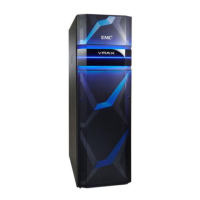5
EXECUTIVE SUMMARY
Data migrations have always been challenging in an enterprise environment. The complexity and size of very large storage
environments makes planning for, scheduling, and executing migrations extremely difficult. Migrations also often involve applications
that cannot be taken offline, even briefly for cutover to a new storage array. Dell EMC’s VMAX Non-Disruptive Migration, or NDM,
allows customers to perform online data migrations that are simple as well as completely non-disruptive to the host and application.
AUDIENCE
These Technical Notes are intended for:
Customers, including IT management and planners, storage architects, and administrators involved in evaluating, acquiring,
managing, operating, or designing and implementing VMAX3 or VMAX All Flash storage arrays.
EMC field personnel and partners involved in designing VMAX3 or VMAX All Flash solutions and planning for and
implementing migrations to VMAX3 or VMAX All Flash arrays.
Please ensure you are working off the latest version of this document as there are frequent updates made. The latest version can
always be found here:
https://www.emc.com/collateral/technical-documentation/h15464-vmax-non-disruptive-migration.pdf
NON-DISRUPTIVE MIGRATION OVERVIEW
Non-Disruptive Data Migration (NDM) is available for VMAX3 and VMAX All Flash storage arrays running HYPERMAX OS 5977 Q3
2016 Service Release or later and Solutions Enabler 8.3 or later. NDM is designed to help automate the process of migrating hosts and
applications to a new VMAX3 or VMAX All Flash array with no downtime.
Non-Disruptive Migration leverages VMAX SRDF replication technologies to move the application data to the new array. It also uses
VMAX auto-provisioning, in combination with PowerPath or a supported host multi-pathing solution, to manage host access to the data
during the migration process. Note - Migrations should take place during low IO activity to minimize Performance Impact.

